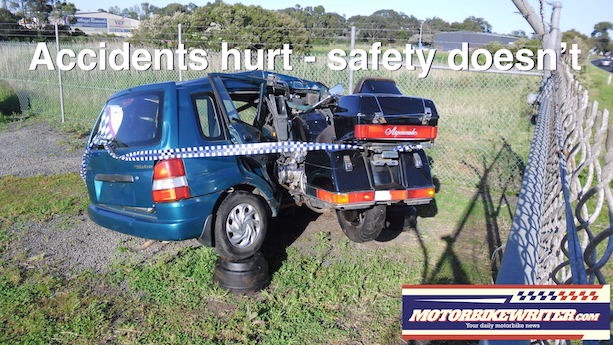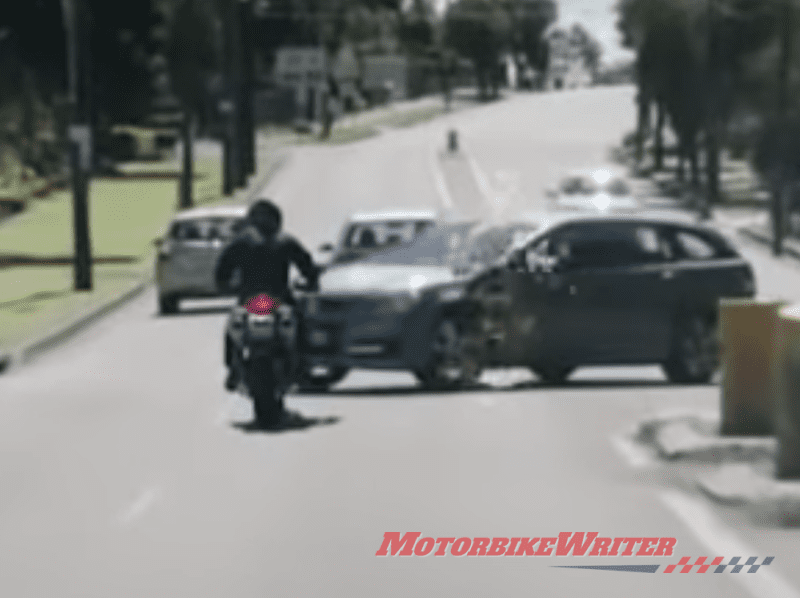Most accidents involving motorcycles and other vehicles occur when the other vehicle is turning across their path.
The result can be lethal as the rider hits the car in a t-bone fashion, rather than a glancing blow.
There are a number of scenarios of turning-vehicle crashes where the rider is completely blameless and others where they are at partial or complete fault.
But in the end, it doesn’t matter whose fault it is if the rider is dead.
Most common turning crashes
These are the four most common crash situations where the other motorist is turning, often without looking for motorcycles:
- Oncoming driver turns across the rider’s path to enter a property or side street;
- Vehicle pulls out of a side street into the path of the motorcycle;
- Motorist pulls over to perform a u-turn without looking; and
- A vehicle in front suddenly turns without indicating just as a rider is overtaking them.
Look for these signs
We all know drivers don’t look for motorcyclists for a variety of reasons.
So riders need to assume the worst and look out for these signs in the above impending SMIDSY (Sorry Mate, I didn’t See You) situations:
- If an approaching vehicle has its indicators on, assume they may turn without giving way to you and look for movement of the wheels and the driver’s head turning;
- Be suspicious of all vehicles coming out of side streets (left or right) and again check their wheels and the driver’s head to see if they have seen you;
- Treat any vehicle that pulls over as a possible u-turn or at least that they will suddenly open their door and step out in front of you; and
- If the vehicle in front suddenly slows, don’t take the opportunity to pass them. Be cautious that they could be about to make a turn, even if they haven’t indicated.
How to avoid SMIDSY crashes
In all the above four situations, slow down and be prepared to take some sort of evasive action, looking for a possible escape route.
If the driver is on a side street or oncoming, try to make eye contact with them.
Make yourself seen by moving in your lane.
You can also alert drivers to your presence by blowing your horn or flashing your lights, although these may be illegal in some jurisdictions and could give the false message that you are letting them cross your path.
Don’t trust loud pipes to save you. Most drivers have their windows up, air-conditioning on and the radio turned up loud, so they may not hear you, anyway.
Besides, in all these situations, your pipes are facing away from the driver.



